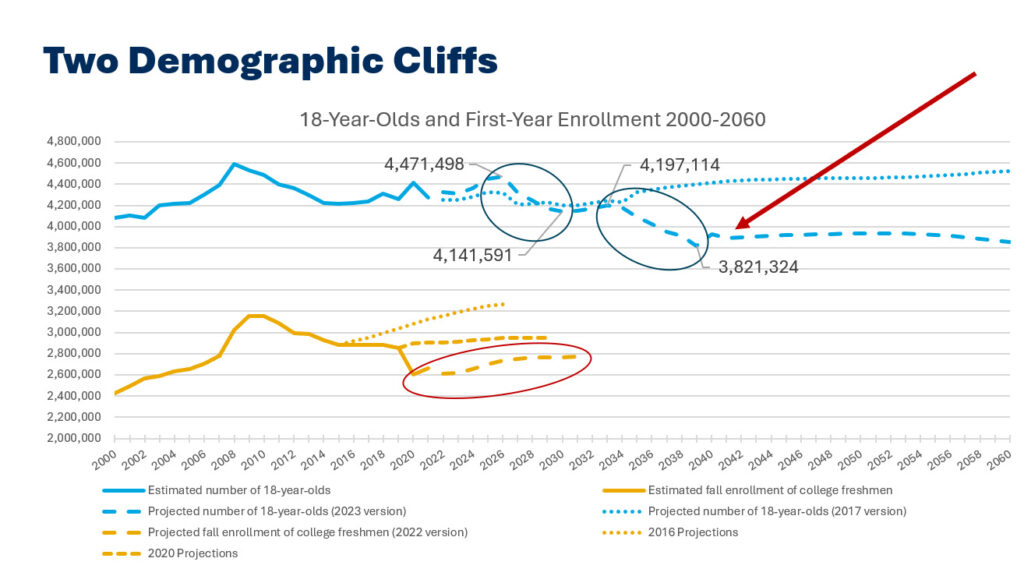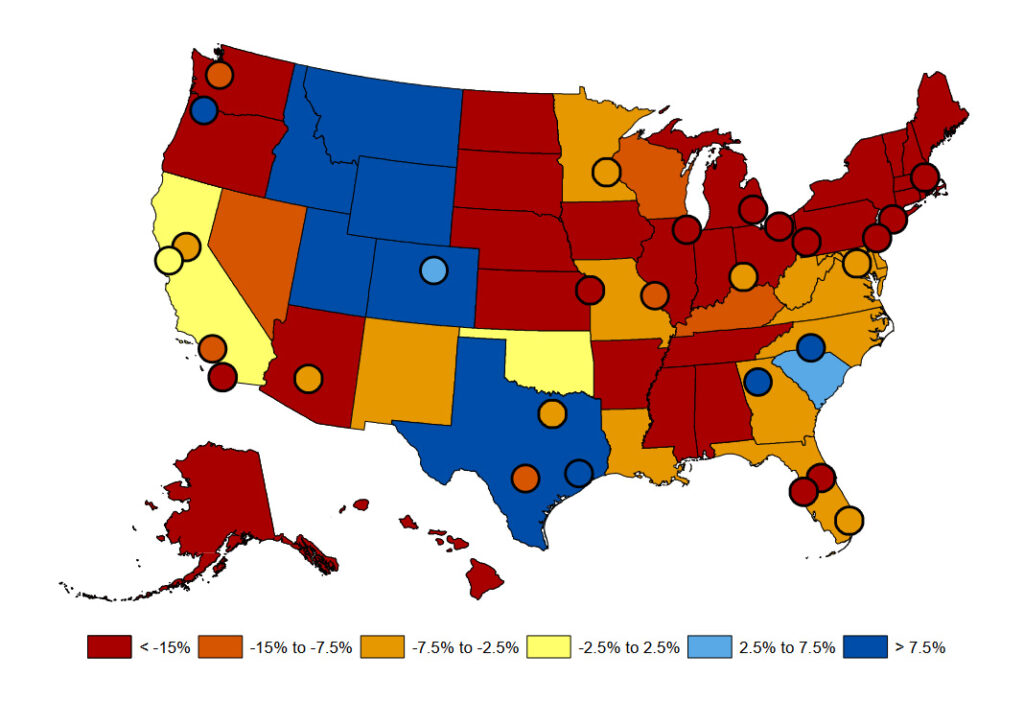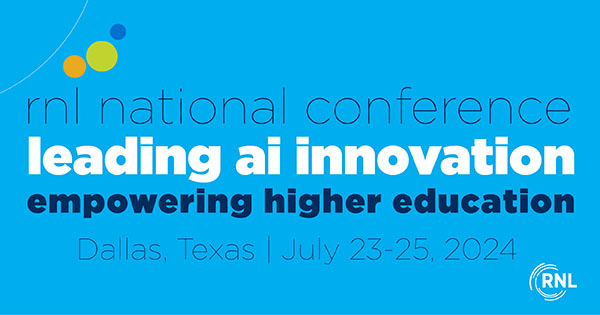enrollment
TWO Demographic Cliffs? The Enrollment Case for Diversifying Revenue Streams
How many times have we all read about the demographic cliff? I wonder if we’ve become desensitized to its implications. Now that the anticipated starting point (2025) is at our doorstep, institutions must be ready. To that end, I’ve been working a white paper (to be published in June) that will lay out more than a dozen strategies that institutions can use to build alternative revenue (student) streams.
But, as I was working on this, I read a story in the Chronicle of Higher Education buried by all the coverage of the FAFSA fiasco that alarmed me. Revised population estimates—the first to be built on the 2020 (rather than the 2010) census data—indicate another demographic cliff in the number of 18-year-olds that will almost immediately follow the first one.
New data show two demographic cliffs
Below we present the original (dotted) and new population data (dashed) in blue and then the U.S. Department of Education (IPEDS) projections for first-year students now, in 2020, and in 2016 in orange. In each set of past projections, the Department of Education was more optimistic than what really happened. The most recent projections (red circle) do not yet account for the revised population data, so the suggested enrollment growth is unlikely, given the new insights the census data offers.

| By the Numbers: | Net New 18-Year-Olds | Percent Change |
| 2026-30: | -329,907 | -7.3% |
| 2030-33: | 55,523 | +1.3% |
| 2033-39: | -375,790 | -9.0% |
| Total Change (2026-39) | -650,174 | -15% |
Uneven change
Nathan Grawe’s 2018 book, Demographics and the Demand for Higher Education, provides the most comprehensive analysis of what is on the horizon. Among dozens of informative charts and tables, his state level projections of change among “college-going” students (calculated using data on 18-year-olds and the other hypotheses laid out in the book) are among the most important. He states, “When population figures are adjusted for the probability of college-going, the situation looks a bit worse (than just the 18-year old data) in two-thirds of the locations.”

A total of 26 states are projected to see more than 15 percent contraction in college-going students (9 west of the Mississippi, 15 east of the Mississippi including all of New England and most of the Midwestern “rust belt”). Six states will see more than 7.5 percent growth, all in the western half of the country and four of which are almost the states with the smallest total population). Only nine states are projected to see growth. Therefore, enrollment stability (or potential growth) will require institutions to rethink how they attract and enroll students in their programs—or lower their entrance requirements in order to fill their classes.
How can you address the “Two Cliffs” dilemma?
We will be diving into this issue in more detail in a forthcoming white paper where we will offer more than a dozen strategies institutions can implement to diversify their student populations, maximize enrollment among current populations (including traditional undergraduates), and plan for the future.
I also highly recommend attending the 2024 RNL National Conference July 23-25. We have dedicated tracks on undergraduate, graduate, and online enrollment, as well as strategic enrollment planning. Many of these sessions will offer enrollment and revenue strategies that will help keep institutions successful and sustainable in this turbulent environment. See the list of sessions and register before May 20 for the best savings.
You can also schedule a consultation today to talk with an RNL enrollment consultant about the best ways to maximize enrollment among your current student audiences and plan for the future. We will offer additional insights on what is working for other institutions.
Join us for the 2024 RNL National Conference in Dallas
Leading AI innovation. Empowering higher education.
Hear the latest innovations and strategies that are impacting undergraduate and graduate enrollment, fundraising, and student success.
- Choose from 100+ sessions across 7 tracks.
- Network with 1,500+ higher ed professionals.
- Return to your institution with the strategies and inspiration to reach your goals.

